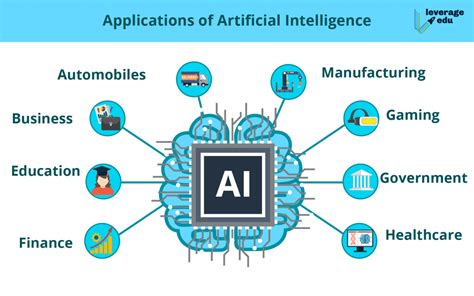Artificial intelligence (AI) has become a transformative force in various industries, revolutionizing everything from healthcare to finance. As AI continues to advance at an unprecedented pace, the possibilities for its applications are seemingly endless. However, identifying and developing innovative AI solutions can be a daunting task. To help you navigate this ever-evolving landscape, let’s explore some key considerations and strategies for finding new and impactful AI applications.

Understanding Pain Points and Motivations
Before embarking on your AI journey, it’s crucial to understand the pain points and motivations that drive organizations and individuals to seek AI solutions. By identifying these unmet needs, you can tailor your AI applications to address specific challenges and deliver tangible value. Some common pain points that AI can alleviate include:
- Insufficient data analysis and insights
- Inefficient business processes
- High operating costs
- Lack of personalized experiences
- Manual and repetitive tasks
On the other hand, key motivations for adopting AI solutions include:
- Improving efficiency and productivity
- Enhancing decision-making
- Gaining competitive advantage
- Meeting customer expectations
- Automating tasks and freeing up human resources
Generating Innovative Ideas
Once you understand the pain points and motivations, it’s time to generate creative ideas for AI applications. This can be a challenging but rewarding process. Here are some tips to help you brainstorm:
- Think laterally: Don’t limit yourself to traditional applications. Explore adjacent industries and unconventional use cases.
- Use “appification”: Imagine turning everyday tasks or processes into AI-powered apps.
- Leverage emerging technologies: Keep abreast of new AI advancements and research emerging technologies that could enhance your applications.
Exploring AI-Driven Applications
To inspire your ideas, here are some examples of successful AI applications across different sectors:
| Sector | Application | Description |
|---|---|---|
| Healthcare | Disease diagnosis | AI algorithms analyze patient data to identify potential diseases with high accuracy. |
| Finance | Fraud detection | AI models analyze transaction patterns to detect fraudulent activity in real-time. |
| Retail | Personalized recommendations | AI systems track customer preferences and recommend tailored products, improving engagement and sales. |
| Transportation | Self-driving cars | AI algorithms enable vehicles to navigate roads without human intervention, enhancing safety and convenience. |
| Education | Virtual assistants | AI-powered virtual assistants provide students with personalized learning experiences and support. |
Developing and Deploying AI Applications
Once you have identified promising ideas, it’s time to develop and deploy your AI applications. This involves:
- Gathering and preparing data
- Training and testing AI models
- Integrating AI functionality into existing systems
- Monitoring and maintaining AI applications
Tips and Tricks for Successful AI Development
- Start small: Don’t try to build a complex AI system overnight. Begin with a simple project and gradually increase the scope.
- Iterate and improve: AI is an iterative process. Don’t be afraid to experiment, collect feedback, and make adjustments as needed.
- Collaborate and partner: Seek partnerships with AI experts and companies to access specialized knowledge and leverage existing technologies.
- Focus on user experience: Design AI applications that are intuitive, user-friendly, and provide clear value to end-users.
FAQs
-
What are the limitations of AI applications?
AI applications can have limitations such as potential bias, data availability, and computational constraints. -
How can I ensure responsible AI development?
Adopt ethical guidelines, address bias and fairness, and ensure data privacy and security when developing AI applications. -
What emerging AI technologies should I watch out for?
Keep an eye on advancements in natural language processing, computer vision, and machine learning algorithms. -
How can I measure the success of my AI applications?
Track key performance indicators (KPIs) such as accuracy, efficiency, and user satisfaction to assess the impact of your AI solutions. -
What are some best practices for AI development?
Use high-quality data, choose appropriate AI algorithms, optimize model performance, and conduct thorough testing and validation. -
How can I stay updated on the latest AI trends?
Attend conferences, read industry publications, and connect with experts in the field to stay abreast of the latest advancements.
Conclusion
Finding new and impactful AI applications is an ongoing journey that requires a deep understanding of pain points, motivations, and innovative thinking. By following the strategies outlined in this article, you can unlock the transformative power of AI and create solutions that address real-world challenges. Remember to prioritize user experience, embrace collaboration, and stay informed about emerging technologies to stay ahead in this rapidly evolving field.
